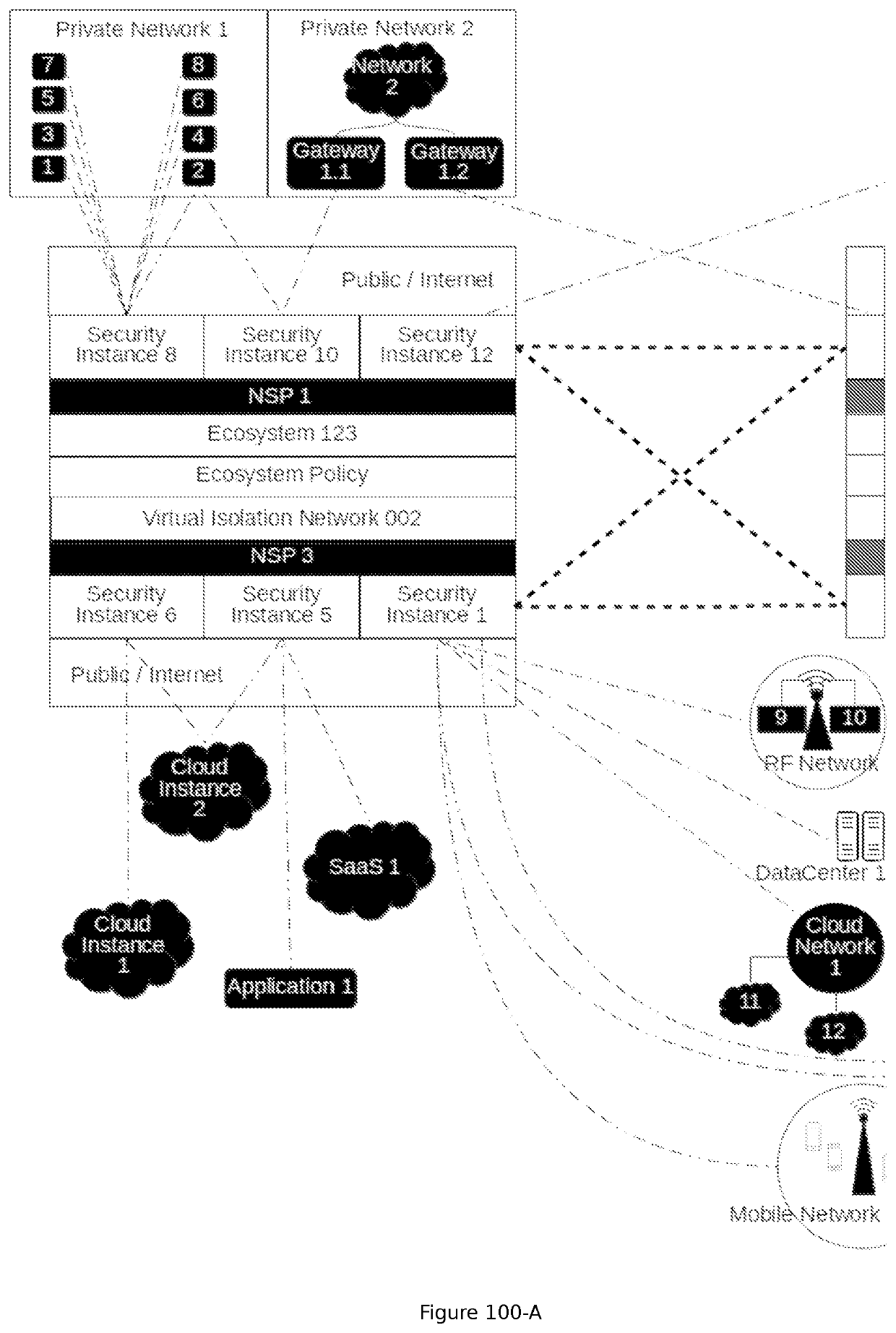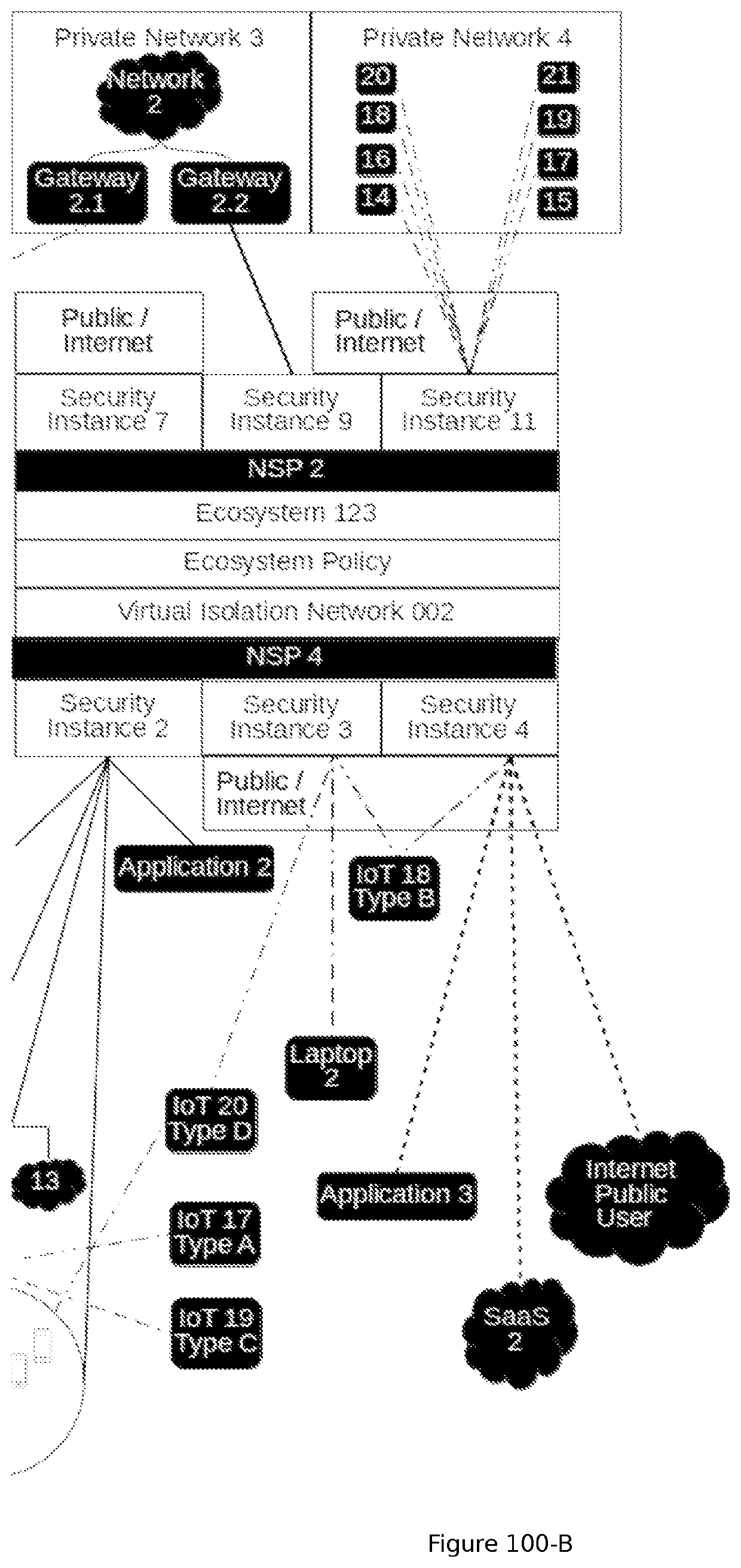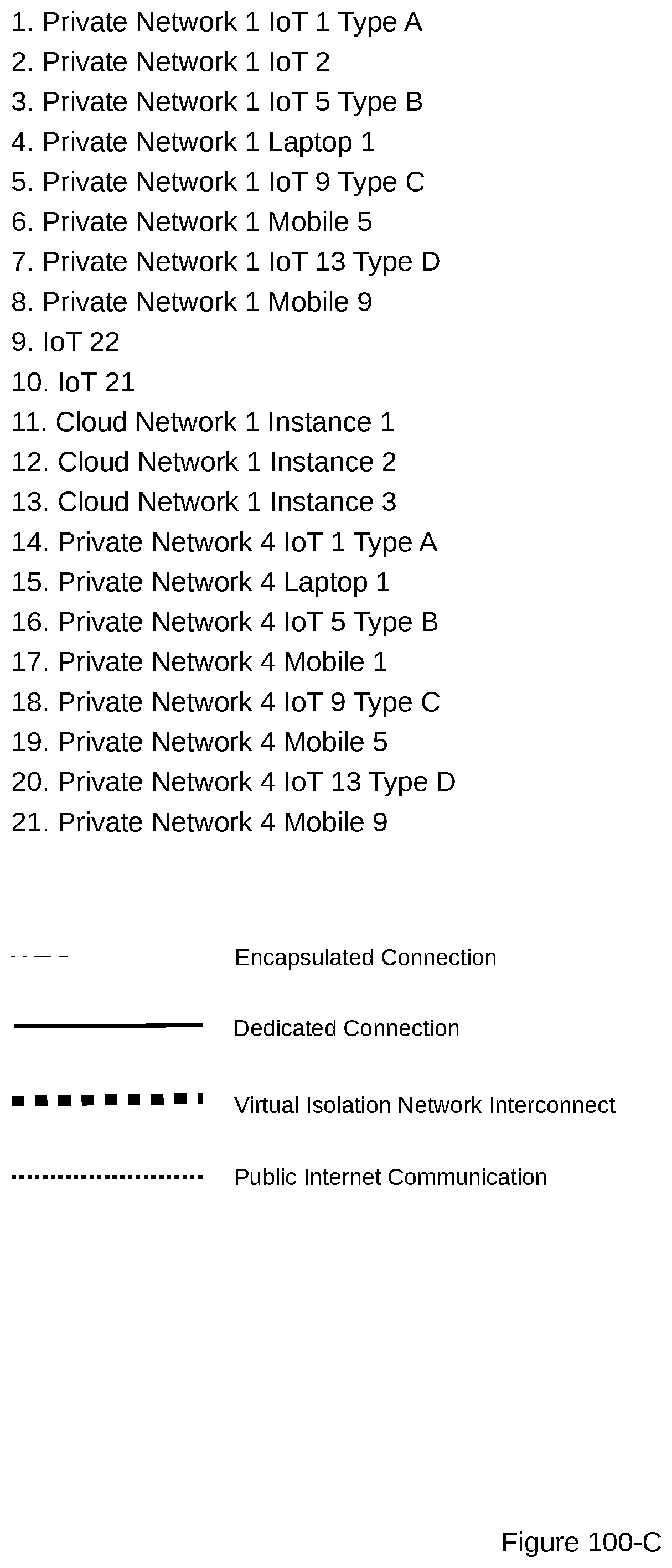IoT technologies often do not adhere to standards and utilize imagination-driven hardware,
software and purposes.
As a result, security is increasingly complex where not only will the overall
system need to be protected from non-participants, but the participants need to be protected from each other.
Furthermore, security erodes exponentially as more disparate IoTs and their supporting applications operate on a shared network.
An increased
attack surface translates into greater
exposure and risk.
Endpoint or on-device security suffers from resource limitations that constrain it to some fraction of the device's resources and capabilities.
Furthermore, given the unique and purpose-built nature of many IoT devices, a limited number of security tools may exist that each offer only granular and incomplete protection.
Worse yet, no security tools may exist at all for that IoT type.
The
endpoint security approach demands high ownership, administration and operations costs—especially for geographically distributed systems.
These limitations, individually or together impose high cost and extreme challenges in securing IoT application platforms.
Network security tools are static and unable to address highly-distributed, large-scale IoT devices.
Network or Gateway security also requires many different piecemeal security technologies to be pooled and integrated and can only protect one component of the IoT application platform—the static application.
Use of prior art network or gateway security, platforms with shared policies and shared resources preclude or at least make it prohibitively difficult to implement per application, per function and per device security for the hosting entity, the third-party co-dependency application and other entities that rely on the services provided by any part of the IoT application.
Further, prior art security technologies tend to be granular and specific in the functions they perform.
These tools and technologies function autonomously and in serial order—lacking awareness of how other tools are functioning and what the outcome of their function is.
However, operators of the
access control system (firewall) may have no awareness of the malicious content and continue to allow communications and access from the malicious sources since the
threat management and
access control systems often function autonomously.
Furthermore, given the wide variety of devices, hosts, systems and applications and their unique attributes, it is not uncommon for some technologies to have no viable security options for specified functions or any viable security options at all.
Even when endpoint and
network security tools are used together, the result is expensive, complex and inconsistent security with many
exposure points.
This creates security gaps in a number of ways:A third-party has uncontrolled privileged access to one or more devices on the network that may allow access to the data flowing on that network.Compromise or manipulation of the application may create
exposure for some or all local and remote IoTs that the application supports.Compromise of an application may lead to the compromise or corruption of the application's data-set.Compromise or manipulation of any of the IoTs for related applications may create exposure for the applications regardless of where the application may be located.Compromise or manipulation of any local IoT can lead to cross-compromise of other related or unrelated IoTs that exist on a shared network.Cross-compromised unrelated IoTs may be used to compromise the associated applications that support the unrelated IoT.Compromise of any IoT may lead to the compromise or corruption of its associated data-set.
The complexity of IoT application platforms has dramatically increased the ownership and operations burdens.
Prior art technologies and their associated complexity drive operators to focus their limited technical staff resources to managing tools rather than managing security.
With prior art technologies, operators are especially exasperated by the many different distributed technologies, where each technology
silo requires multiple disparate tools, with each utilizing a unique management interface and requiring
subject matter expertise.
Simply said, the more convoluted and complex the security systems, the less secure the platform will be.
Over time and as old applications and systems are decommissioned and new applications and systems are implemented, even the most obsessive security teams develop gaps with overlapping, conflicting, overly broad, excessive and straggler policies.
Without automated tracking and association of the policies to applications and systems, security teams dare not disable or delete these policies for fear of impacting production applications or systems.
The complex nature of accurately identifying, validating and managing the disable or delete process for these scattered policies across distributed devices, networks, technologies, geographies, security systems and teams is overwhelming.
As such, organizations that rely on and use prior art technologies will not recognize periods where updates and upgrades of the many individual technologies in their environment is considered completed.
While there is an expectation that multiple users may access the
software-defined infrastructure, Brech offers no solution to the problem of range for large numbers of mobile and distributed devices beyond the reach of the network employed.
Nor does Brech allow for differentiating the security offered among various devices and or limiting services to specified application(s).
The prior art leaves the network owner unable to easily or sustainably implement: access limits, controls, identity, protection and privacy between the device or devices and the remote application(s) and implement
visibility and security on a per-device basis.
Similarly, the network owner is faced with the complexity that arises from implementing, managing,
troubleshooting and decommissioning policies, many of which are overlapping, and repetitive throughout all different components of the system and
layers of the
Operating System Interconnection (OSI) model.
 Login to View More
Login to View More  Login to View More
Login to View More 


